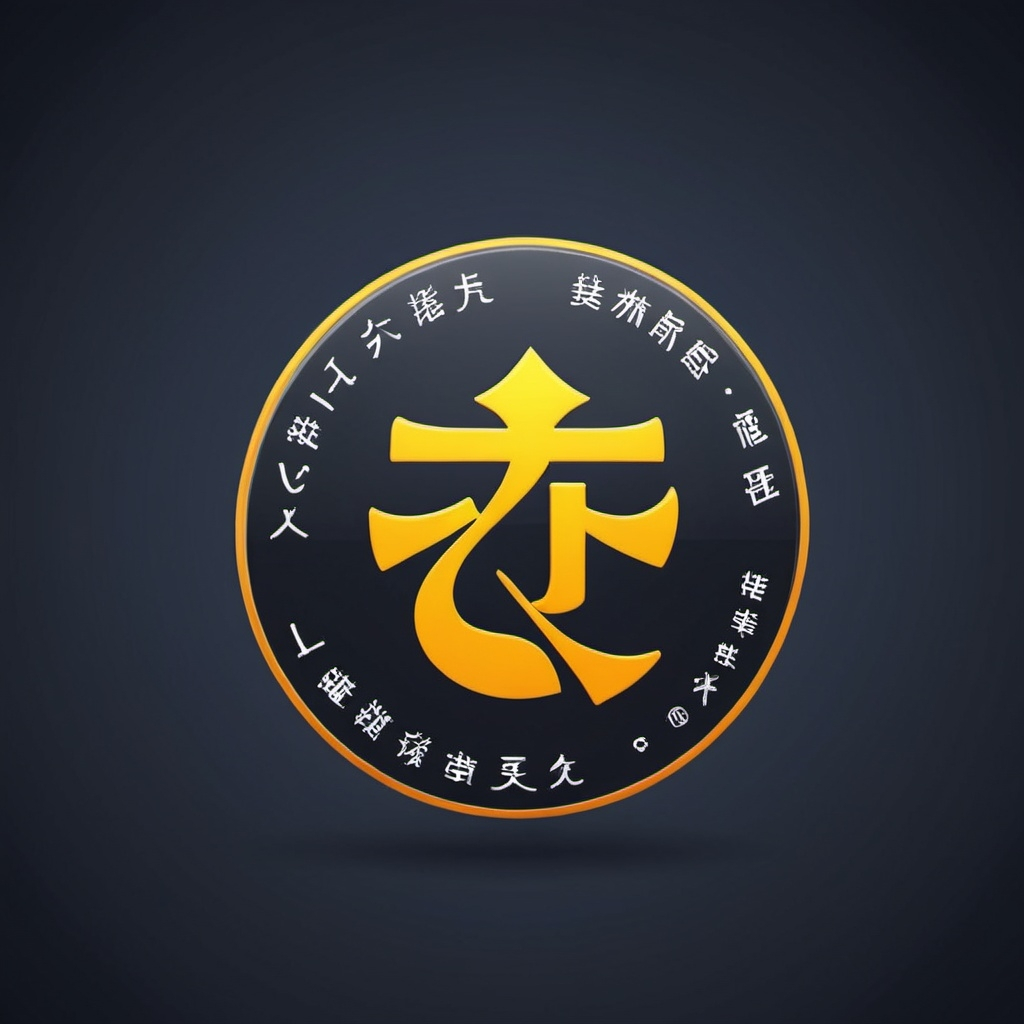A Modern Tool for Efficient Chinese Input and Beyond
In the realm of programming languages, diversity and specialization are crucial for meeting the varied needs of developers worldwide. Among the plethora of languages designed for different purposes, the Cangjie programming language stands out for its unique approach to handling Chinese characters. Rooted in the traditional Chinese input method invented by Chu Bong-Foo in the 1970s, the Cangjie system has evolved to become a powerful programming language that bridges the gap between linguistic heritage and modern computational demands. This article delves into the intricacies of the Cangjie programming language, exploring its origins, functionality, and the advantages it offers over other languages. We will also provide a comparative analysis with similar languages and offer insights into its specialized input method, which has revolutionized how Chinese characters are processed and utilized in programming contexts.
Table of Contents
Understanding the Cangjie Programming Language.
Key Features of the Cangjie Programming Language.
Comparative Analysis: Cangjie vs. Similar Programming Languages.
Practical Applications of the Cangjie Programming Language.
Top Companies and Organizations Likely Using or Benefiting from Cangjie Language.
Understanding the Cangjie Programming Language

Maxforce Fusion 30 gm Cockroach Gel for Home and Kitchen | Anti Roach Gel | Cockroach Killer | Home Pest Control
Price: ₹569
The Cangjie programming language is built on the foundational principles of the Cangjie input method, which was originally created to facilitate the efficient typing of Chinese characters. Named after Cangjie, the legendary inventor of Chinese characters, this method uses a combination of 24 basic shapes to form characters. Each shape corresponds to a specific key on the keyboard, allowing users to type complex Chinese characters quickly and accurately.
The Cangjie programming language leverages this input method to enable programmers to write code that is both intuitive and efficient. By utilizing the familiar Cangjie input system, developers can seamlessly integrate Chinese characters into their programming, opening up new possibilities for software development in Chinese-speaking regions. This integration is particularly valuable in applications that require extensive use of Chinese text, such as word processors, educational software, and digital publishing platforms.
Key Features of the Cangjie Programming Language
1. Efficient Chinese Character Input
At the heart of the Cangjie programming language is its ability to facilitate rapid and accurate Chinese character input. This is achieved through the use of the Cangjie input method, which assigns specific codes to each character based on its structure. This method reduces the complexity of typing Chinese characters, making it an ideal choice for developers who work extensively with Chinese text.
2. Intuitive Syntax
The Cangjie programming language boasts an intuitive syntax that mirrors the structure of the Chinese language. This makes it accessible to native Chinese speakers, allowing them to write code in a way that feels natural and logical. The language’s syntax is designed to minimize ambiguity and enhance readability, ensuring that code can be easily understood and maintained.
3. Rich Character Set Support
One of the standout features of the Cangjie programming language is its support for a wide range of Chinese characters. This includes traditional, simplified, and even obscure characters, ensuring that developers have the flexibility to work with any form of Chinese text. The language’s robust character set support is crucial for applications that require comprehensive Chinese language processing capabilities.
4. Cross-Platform Compatibility
The Cangjie programming language is designed to be cross-platform, enabling developers to create applications that run seamlessly on different operating systems. This flexibility is essential for reaching a broad audience, particularly in regions where multiple operating systems are in use. Whether it’s Windows, macOS, or Linux, the Cangjie programming language ensures that applications perform consistently across platforms.
Comparative Analysis: Cangjie vs. Similar Programming Languages
To better understand the unique advantages of the Cangjie programming language, it’s helpful to compare it with other languages that also focus on handling non-Latin scripts. Below is a comparative analysis table highlighting the key differences and similarities between Cangjie and other popular programming languages.
| Feature | Cangjie | Python | Ruby | JavaScript | Go |
| Primary Focus | Chinese character input | General-purpose | General-purpose | Web development | System programming |
| Input Method | Cangjie input system | Latin alphabet | Latin alphabet | Latin alphabet | Latin alphabet |
| Character Set Support | Extensive Chinese | Limited | Limited | Limited | Limited |
| Syntax | Intuitive for Chinese | General-purpose | General-purpose | General-purpose | General-purpose |
| Cross-Platform Compatibility | High | High | High | High | High |
| Learning Curve | Moderate | Easy | Easy | Easy | Moderate |
| Use Cases | Chinese text processing | Web, data science | Web, scripting | Web, server-side | Network services |
The Cangjie input method revolutionized the way Chinese characters are typed by breaking down each character into a series of 24 basic shapes. Each shape corresponds to a key on the keyboard, and characters are formed by combining these shapes. This system significantly reduces the time and effort required to type Chinese text, as it eliminates the need for complex stroke sequences or pinyin input.

To use the Cangjie input method, users memorize the shapes associated with each key and the rules for combining them. For example, the character “我” (wǒ, meaning “I” or “me”) is typed using the keys for the shapes that represent “hand,” “axe,” and “dagger.” The method is highly efficient for those who are familiar with it, enabling rapid and accurate input of Chinese text.
The Cangjie input method’s efficiency and accuracy make it a cornerstone of the Cangjie programming language, providing a seamless way to incorporate Chinese characters into code. This integration is particularly valuable in applications that require extensive use of Chinese text, such as educational software, digital publishing, and language learning tools.
Practical Applications of the Cangjie Programming Language
The versatility and efficiency of the Cangjie programming language make it an excellent choice for a variety of applications. Here are some key areas where it excels:
1. Educational Software
Educational tools that teach Chinese language and culture can greatly benefit from the Cangjie programming language. Its intuitive syntax and efficient character input system make it easy to develop interactive applications that help students learn Chinese characters, grammar, and pronunciation.
2. Digital Publishing
For publishers and content creators who produce Chinese-language content, the Cangjie programming language offers a streamlined workflow for integrating Chinese text into digital publications. Its rich character set support ensures that all forms of Chinese characters can be accurately represented.
3. Word Processing
The Cangjie programming language can be used to develop advanced word processing software tailored for Chinese text. With its efficient input method and comprehensive character set support, users can create and edit documents with ease, making it a valuable tool for writers, editors, and translators.
4. Language Learning Tools
Language learning applications that focus on Chinese can leverage the Cangjie programming language to create engaging and effective learning experiences. By incorporating the Cangjie input method, these tools can help learners develop proficiency in typing and recognizing Chinese characters.
5. Custom Software Development
Businesses and organizations that require custom software solutions for handling Chinese text can benefit from the Cangjie programming language. Its cross-platform compatibility and intuitive syntax make it an ideal choice for developing bespoke applications that meet specific needs.
Top Companies and Organizations Likely Using or Benefiting from Cangjie Language
Identifying the top companies specifically using the Cangjie programming language can be challenging because this language is not as widely publicized as mainstream languages like Python, Java, or JavaScript. However, companies and institutions involved in Chinese language processing, input method development, and specific types of software development for Chinese-speaking regions are more likely to use Cangjie or benefit from its functionalities. Here is a list of types of organizations and potential top companies that might use or benefit from the Cangjie programming
- Chinese Technology and Software Companies:
- Tencent: Known for developing a wide range of software and applications, including those that support Chinese input methods.
- Alibaba: A technology giant that might use various tools for Chinese language processing in its e-commerce platforms.
- Baidu: As a leader in search and AI, Baidu may utilize Cangjie for better text input and processing in their Chinese language services.
- Educational Software Developers:
- NetDragon Websoft: A major player in the educational technology space, developing educational software for Chinese-speaking regions.
- New Oriental Education & Technology Group: Developing language learning tools that could benefit from efficient Chinese input methods.
- Digital Publishing Companies:
- China Publishing Group Corporation: Engaged in digital publishing where efficient Chinese text processing is crucial.
- Phoenix Publishing and Media Group: Another major player in publishing, potentially using advanced input methods for digital content creation.
- Word Processing and Office Software Providers:
- Kingsoft (WPS Office): A leading provider of office software in China, likely utilizing efficient Chinese input methods.
- Youdao: Known for its dictionary and language learning apps, which may incorporate advanced input methods like Cangjie.
- Telecommunications Companies:
- Huawei: Developing a wide range of technologies, including user interfaces that may benefit from efficient Chinese input.
- ZTE Corporation: Another telecom giant potentially using Cangjie in their devices’ text input systems.
- Government and Educational Institutions:
- Tsinghua University: One of China’s top universities, possibly involved in research and development of Chinese input methods.
- Chinese Academy of Sciences: Engaged in numerous technological advancements, including language processing tools.

While specific use of the Cangjie programming language by these companies is not publicly detailed, the organizations listed above are likely candidates for leveraging such tools due to their involvement in Chinese language processing, digital publishing, educational software, and telecommunications. The efficiency and accuracy of the Cangjie input method make it a valuable asset for any company or institution working extensively with Chinese text.
Consider the elegance of a calligrapher’s hand, each stroke deliberate and imbued with meaning. Similarly, the Cangjie programming language enables developers to create with precision and beauty, harmonizing the complexities of the Chinese script with the structured world of programming. It offers a seamless integration of cultural heritage and modern technology, making it an indispensable tool for software development in Chinese-speaking regions.
As a river carves its path through the landscape, shaping and being shaped by its journey, so does Cangjie carve a unique niche in the programming world. It navigates through the intricacies of Chinese text, offering efficient input and processing capabilities. This language is not just a tool; it’s a bridge that connects the ancient art of Chinese writing with the cutting-edge demands of contemporary software development.
With the rise of globalization and the increasing prominence of Chinese language content, the Cangjie programming language stands as a beacon for developers. It illuminates the path towards creating applications that are culturally resonant and technically proficient. In this article, we will explore the depths of the Cangjie programming language, its origins, features, and the profound impact it has on the digital world, much like how poetry can capture the essence of the human experience in a few poignant lines.
The Cangjie programming language represents a unique and powerful tool for developers working with Chinese text. Its integration of the efficient Cangjie input method, intuitive syntax, and robust character set support make it an invaluable asset for a wide range of applications. Whether in education, digital publishing, word processing, or language learning, the Cangjie programming language offers unparalleled capabilities for handling Chinese characters. By understanding and utilizing this language, developers can unlock new possibilities for innovation and efficiency in software development.
More like this: Online Coding Courses – LearnXYZ





I see something truly special in this internet site.
Greetings from California! I’m bored to tears at work so I decided to check out your website on my iphone during lunch break. I really like the knowledge you present here and can’t wait to take a look when I get home. I’m surprised at how quick your blog loaded on my mobile .. I’m not even using WIFI, just 3G .. Anyways, good site!
Hi there! This post couldn’t be written any better! Reading through this post reminds me of my previous room mate! He always kept talking about this. I will forward this article to him. Pretty sure he will have a good read. Thank you for sharing!
You have made some decent points there. I checked on the web to find out more about the issue and found most individuals will go along with your views on this web site.
Your article helped me a lot, is there any more related content? Thanks!
Yes there is a lot of content.
Saved as a favorite, I really like your website!
) Znovu ho navštívím, protože jsem si ho poznamenal. Peníze a svoboda je nejlepší způsob, jak se změnit, ať jste bohatí a
|Hello to all, for the reason that I am actually keen of
muito dele está a aparecer em toda a Internet sem o meu acordo.
Howdy! Do you know if they make any plugins to help with Search Engine Optimization? I’m trying to get my blog to rank for some targeted keywords but I’m not seeing very good success. If you know of any please share. Kudos!
Amazing! This blog looks exactly like my old one! It’s on a entirely different topic but it has pretty much the same layout and design. Great choice of colors!
الاستمرار في توجيه الآخرين.|Ahoj, věřím, že je to vynikající blog. Narazil jsem na něj;
Hi! This is kind of off topic but I need some guidance from an established blog. Is it very hard to set up your own blog? I’m not very techincal but I can figure things out pretty fast. I’m thinking about setting up my own but I’m not sure where to start. Do you have any tips or suggestions? Thank you
Kender du nogen metoder, der kan hjælpe med at forhindre, at indholdet bliver stjålet? Det ville jeg sætte stor pris på.
When I originally commented I clicked the “Notify me when new comments are added” checkbox and now each time a comment is added I get several emails with the same comment. Is there any way you can remove me from that service? Bless you!